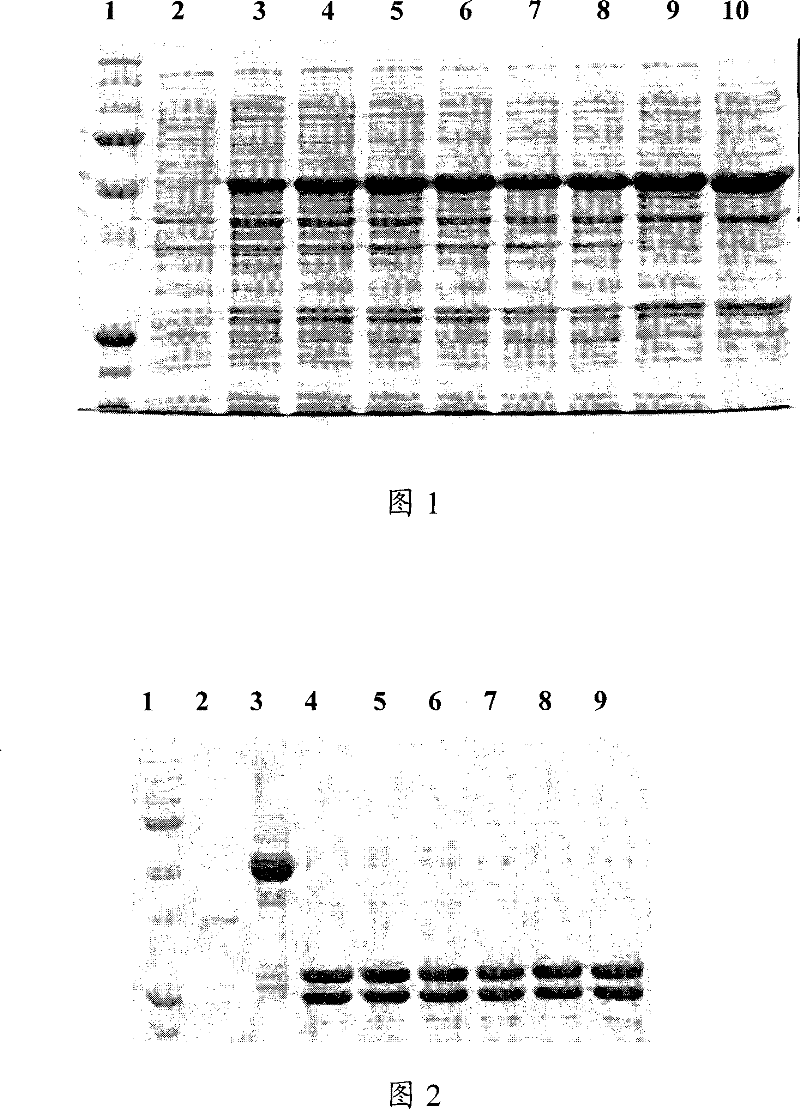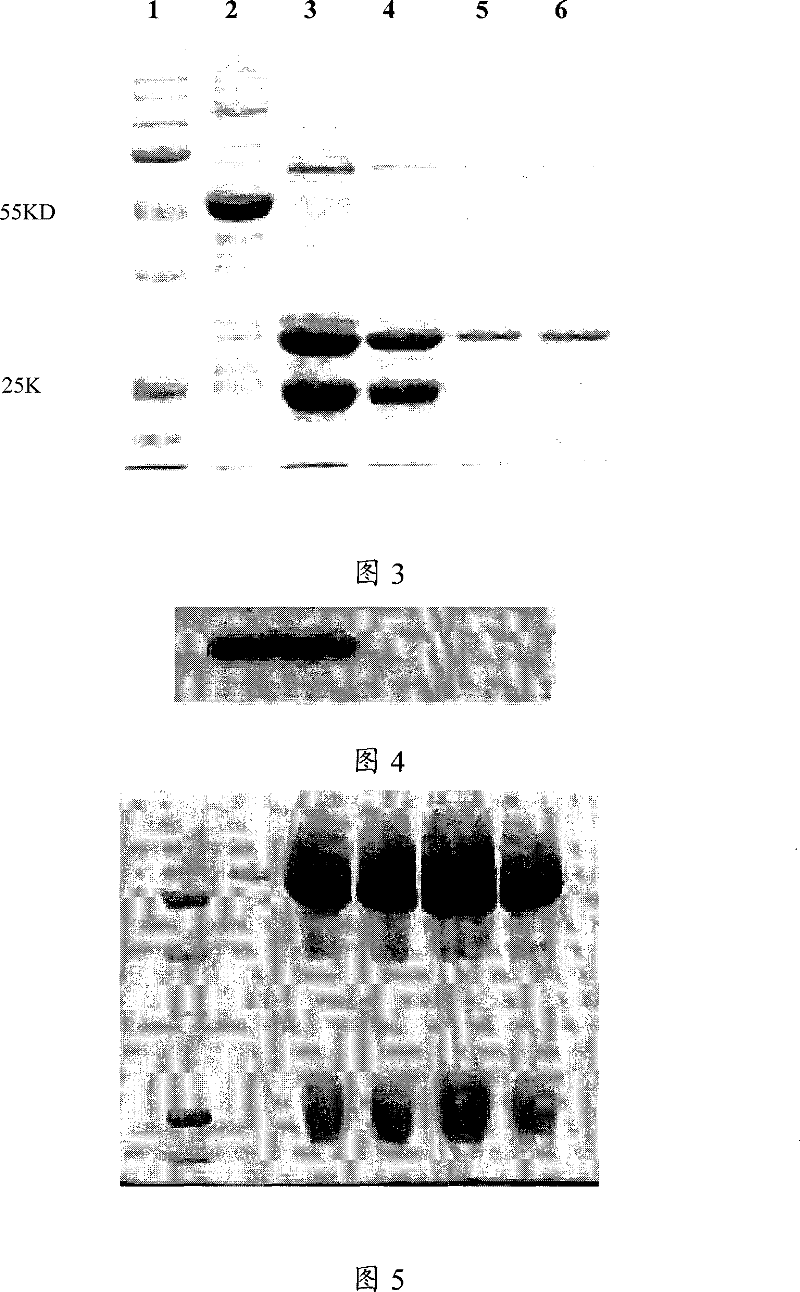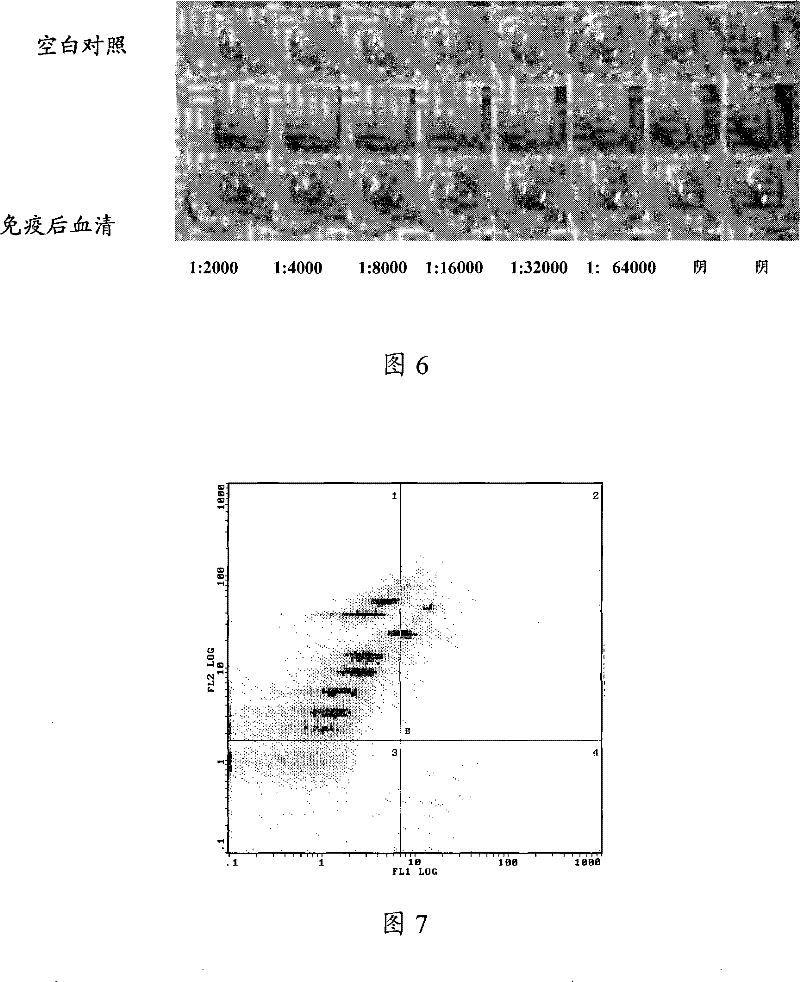Antihuman SCGN monoclone antibody, preparation, application and hybrid tumor cell strain
A monoclonal antibody, detection kit technology, applied in the direction of anti-animal/human immunoglobulin, anti-hormone immunoglobulin, biochemical equipment and methods, etc., can solve the difficulty of diagnosis, small cell lung cancer does not express neuroendocrine markers and other problems, to achieve the effect of major application prospects
- Summary
- Abstract
- Description
- Claims
- Application Information
AI Technical Summary
Problems solved by technology
Method used
Image
Examples
Embodiment 1
[0031] Embodiment 1: Expression and purification of GST-SCGN fusion protein
[0032] 1. Induced expression of GST-SCGN fusion protein
[0033] A. Pick the pGEX-4T-1 / SCGN plasmid (constructed by Shanghai Yuhua Life Science and Technology Development Co., Ltd.) containing the nucleotide sequence shown in SEQ ID No.3 to the LB culture medium (containing Amp50 μg / ml) overnight at 37°C.
[0034] B. Dilute the overnight bacteria at a ratio of 1:100, and culture with shaking at 37°C until the OD600 of the bacterial solution reaches 0.4-1.0.
[0035] C. Add IPTG inducer to a final concentration of 1 mM, and induce for 4 hours at 30°C.
[0036] D. Centrifuge at 4500rpm for 5 minutes, collect the cells and suspend them in pre-cooled PBS (Phosphate Buffer Solution) phosphate buffer solution, add phenylmethylsulfonamide fluoride (PMSF) to a final concentration of 2 mmol / L.
[0037] E. Sonicate the bacterial cells in an ice bath (5 seconds each time, 5 seconds in between, 30 minutes in...
Embodiment 2
[0060] Embodiment 2: the preparation of antiserum
[0061] Use 50 μg of purified SCGN protein and an equal volume of complete Freund's adjuvant to fully mix and emulsify it, and the formation of water-in-oil is a sign of successful mixing. Female BALB / c mice aged 6-8 weeks were injected subcutaneously at multiple points on the back for primary immunization. Two weeks later, BALB / c mice were boosted with an equal volume of incomplete Freund's adjuvant and 50 mg of SCGN protein emulsified, and boosted every two weeks thereafter. After boosting immunization for 3 times, blood was collected from the eyes of the mice and the serum was separated, and the titer was determined by indirect ELISA method. When it reached 10 -4 Then ready to blend. Immunization was boosted once three days before fusion, and immunized mice were obtained.
Embodiment 3
[0062] Embodiment 3: Preparation of monoclonal antibody
[0063] 1. Feeder cell plating
[0064] A 16-week-old BALB / c immunized mouse was killed by pulling its neck, and then disinfected by soaking in 75% alcohol. The peritoneal cavity was opened, feeder cells were taken, plated, cultured in a 37°C incubator, and reserved for the next day.
[0065] 2. Fusion of immunized splenocytes with mouse myeloma cells
[0066] The spleen of the immunized BALB / c mouse was taken under aseptic conditions, the capsule was peeled off to free the cells, and the filtered spleen cells were collected by passing through a 100-mesh steel mesh. Mix SP2 / 0 cells in a good growth state and in the logarithmic growth phase with splenocytes at a ratio of 1:10, fuse with 50% PEG as the mediator, resuspend the cells with HAT medium after centrifugation, and use the containing Spread the HAT culture medium of the cells on a 96-well plate, 2 drops per well. Placed at 37 degrees, 5% CO 2 cultured in an in...
PUM
 Login to View More
Login to View More Abstract
Description
Claims
Application Information
 Login to View More
Login to View More - R&D
- Intellectual Property
- Life Sciences
- Materials
- Tech Scout
- Unparalleled Data Quality
- Higher Quality Content
- 60% Fewer Hallucinations
Browse by: Latest US Patents, China's latest patents, Technical Efficacy Thesaurus, Application Domain, Technology Topic, Popular Technical Reports.
© 2025 PatSnap. All rights reserved.Legal|Privacy policy|Modern Slavery Act Transparency Statement|Sitemap|About US| Contact US: help@patsnap.com



